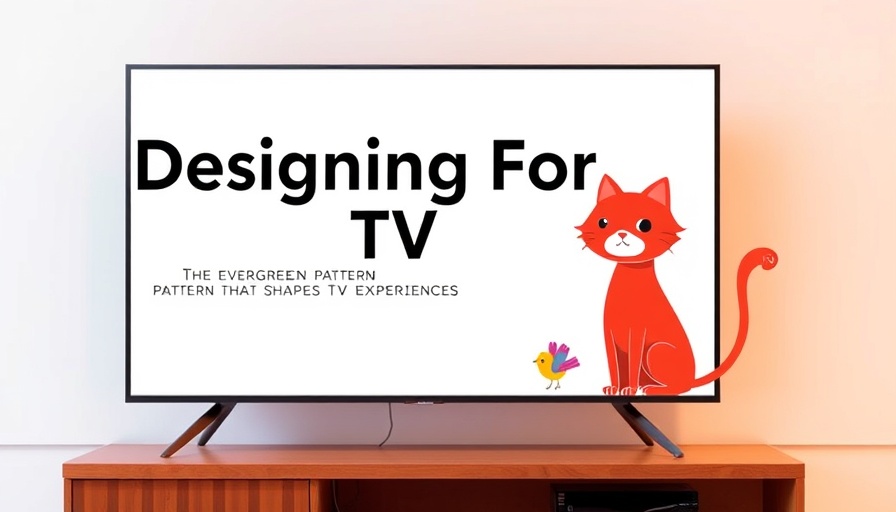
Understanding the Unique World of TV Interface Design
Television is often seen as just an entertainment medium, yet its design and usability are paramount in shaping the overall user experience. As Milan dives deep into the evolution of television, it's essential to recognize that designing for TV interfaces is distinct from other digital platforms. This distinction is primarily due to the way we interact with the television, referred to as the 10-foot experience.
The 10-Foot Experience: A Unique Interaction Paradigm
The concept of the "10-foot experience" highlights that users engage with TV content from a greater distance, which fundamentally changes how interface elements must be designed. To accommodate this distance, text and other UI elements must be significantly larger, ensuring visibility and readability. Moreover, contrast becomes crucial. Dark themes tend to perform better, fitting seamlessly into living environments where lighting can vary from dim to bright.
Remote Controls: The Unsung Hero of TV Interaction
To bridge the gap between viewer and device, remote controls play an indispensable role. Although they may seem basic compared to the interaction methods of computers or smartphones, remotes have evolved but still retain many of their original design cues. The very nature of remote interaction dictates a more deliberate approach; rapid and fluid motions aren't feasible as they are with touchscreens. Thus, designers must be mindful of these limitations while crafting intuitive UI.
The Evolution of TV Design: Lessons from the Past
Understanding the historical context of TV design offers invaluable insights into current practices. Since the days of early black-and-white sets to today's smart TVs, each iteration of television has responded to consumer needs and technological advancements. As Milan reflects on this evolution, he reminds us that while restrictions exist, innovation continues to thrive. Design aspects that seemed paramount years ago may transform or even become obsolete, yet they pave the way for new ideas and futuristic interactions.
Current Trends Shaping TV Interface Designs
As technology proliferates, trends emerge in the realm of television design. One notable trend is the increasing integration of voice commands, allowing users to navigate content hands-free. This shift minimizes reliance on traditional remotes and ushers in an era of accessibility. Designers have the opportunity to create voice-interactive interfaces that prioritize user-friendliness and inclusivity.
Final Thoughts: Why Designing for TV Matters
As we sink deeper into a digital world where television interfaces play an integral role in our daily lives, understanding their design becomes vital. These interfaces not only enhance user experiences but also mold our interactions with media and content consumption. The field, while often overlooked, requires thoughtful consideration of unique user needs, a deeper understanding of user behavior, and responsiveness to technological shifts. The future holds even greater potential for innovation, and with it, new patterns will emerge.
Challenge yourself and your organization to explore the intricate details of TV design. These insights aren’t just beneficial for designers but crucial for developers, marketers, and content creators aiming to enhance consumer engagement.
 Add Row
Add Row  Add
Add 




Write A Comment